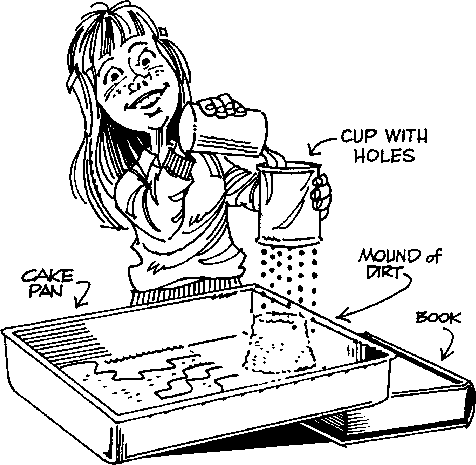| |
|
Water Quality Poster - Grade School
|
|
- Have the students place one side of the cake pan on a thin
book or tablet of paper to create a slight slope.
- Have the students make a small mound with the 240 mL of soil
at the upslope side of the cake pan. Explain to students that
the mound represents a hill.
- Instruct a student to hold the 240-mL cup with holes over the
soil mound. Then add water to this cup. Explain to the students
that they are simulating rain. Have the students observe the
amount of soil in the "lake" at the bottom of the pan.

- Introduce these words: erosion - the movement of soil from
the mound, and sediment - the soil deposited in the lake at the
bottom of the pan.
- Remove the soil and water from the pan. Refill one paper cup
2/3 full of water. Repeat steps 2 and 3, using the second 240-mL
cup of soil. Place the vegetative litter on top of the soil mound.
Have it "rain" on the litter-covered mound as described
in step 4. Have the students observe the amount of soil in the
"lake" at the bottom of the pan.
- Discuss with the students the differences between the amount
of soil in the "lake" at the bottom of the pan following
the two different erosion experiments.
Interpretive Questions
- Which one of the mounds produced the greatest amount of sediment?
Answer: The mound that was not covered with vegetative
litter.
- What effect did the vegetative litter have on erosion?
Answer: It reduced the erosion by protecting the soil from
direct impact of the "rain."
|
|
|

